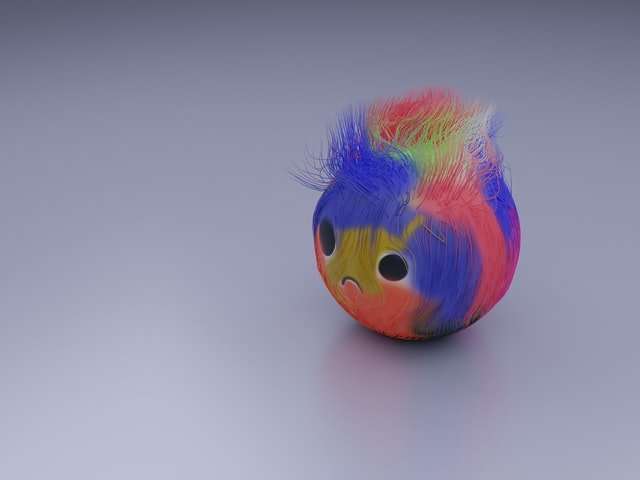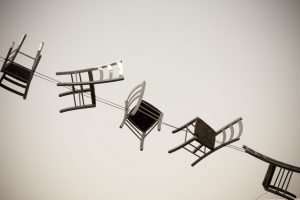This blog will be a place to share with you the latest trends, events, exhibitions and all news related to contemporary aboriginal art in Australia. Here you will find a lot of interesting articles and news, but also some interviews with artists, galleries and other key people involved in this lifestyle.
The main idea is to create an interactive platform where people can share their opinions about contemporary aboriginal art and discuss together the new ideas that are changing the way of telling stories in arts.
My name is Annamaria Pintore, I’m an anthropologist and I have been living in Australia for a couple of years now. I’ve been working as a freelance writer for several different magazines and newspapers like Il Messaggero, Alfa Romeo Magazine, Dolce Vita Magazine, Donna Moderna e molti altri.
I have been living in Alice Springs for about three months now. I’m really excited about this new experience because it’s going to be my first time living in such an amazing environment: here you can meet so many different cultures that mix together with their own traditions and beliefs creating something unique to this area.
I’m really interested in photography as well so I’ll try to update the blog as often as possible with new pictures taken here or there!
In recent years, Aboriginal art has become a very profitable industry. More and more artists are getting involved in the business side of their artwork as well. As of today, there are many galleries and art dealers exclusively dealing with Aboriginal art. The earlier practices of selling paintings for $50 or $100 have been replaced by contracts with galleries involving high numbers and complicated agreements.
Tobacco Road Gallery, an aboriginal art dealer from Darwin, was one of the first to enter this lucrative market back in the late 1980s. One of the owners, Michael Cooksey, made an interesting observation about what he calls the “new face” of Aboriginal art: “The new work is less linear and more abstract in concept”, he says. “It’s more adventurous in subject matter and design. It breaks away from its traditional past”.
This sounds like a positive step towards a new era for Aboriginal arts; however some critics believe that this new era is going to kill the essence of its traditional culture. Aboriginal cultures have been built around oral storytelling for thousands of years, but now the stories are being told through abstract paintings without words or context. There is no evidence that this practice will change anytime soon as Aboriginal artists carry on creating their works with different intentions in mind.
†
Art is one of the most important things in life. Art is the way we discuss our feelings through something that touches us deeply. Art can be the best way to express what we want to say and how we want to say it. Aboriginal art has its own way of telling stories through artworks.
Art can take many forms: paintings, drawings, sculptures, architecture, music or performance art. The most important thing with art is that it should carry a message and it should touch someone in a very deep level.
Art has been used as a tool for many years now to tell stories and explain different things to people around the world. In this case, Aboriginal art uses art as an instrument of communication between people and cultures. It is not just an object or a visual but rather it tells a story and if properly interpreted, it has a meaning behind it.
The aboriginal paintings are done by the hands of real Aboriginals who use paint brushes made from their own hair (at least in some tribes). These brushes have special significance for the Aborigines since their hair keeps growing even when they die so they believe these brushes will never run out of paint (or colour) since they are alive! The paint brush is also a symbol of fertility and everlasting youth.
Since the late 1960s, Aboriginal art has become one of Australia’s most significant cultural exports, with important exhibitions being held overseas and artists holding solo exhibitions in Sydney, Melbourne and other capital cities.
In 2005 The National Museum of Australia staged an exhibition called “Arrente Art: The Canning Stock Route” which displayed a selection of traditional paintings by the late Albert Namatjira (1902-1959), who is regarded as one of the greatest landscape painters. It is thought that his works were inspired by the works of European impressionist painters such as Monet and Cezanne. His work appears as a series of dots on canvas which when viewed from afar, create an entirely new image. His use of strong vibrant colors is also thought to be influenced by European impressionist painters.
The dot painting technique was not originally used by Aborigines but rather was introduced to them by white settlers. It was believed that this technique provided Aboriginal people with the opportunity to make art accessible to non-Aboriginal viewers. However, some believe that dot painting actually detracts from the meaning of traditional Aboriginal art because it does not accurately depict the way stories are traditionally told in Aboriginal culture. It is thought that this kind of contemporary art can replace traditional
Contemporary Aboriginal art is a term that can apply to the art of indigenous Australian peoples, but more broadly it describes the art and artists of Australia, and the artists of Torres Strait Islander descent.
The term Contemporary Aboriginal Art was first used in 1971 by art historian Robert Owen Hood in a paper delivered to the Contemporary Arts Society in Sydney. The paper outlined how Aboriginal arts had moved from being based on traditional designs to using contemporary imagery inspired by or taken from traditional designs.
The move from using traditional designs to contemporary imagery has continued with many artists such as Rover Thomas producing works that have no basis in traditional images but are often inspired by them.
Contemporary Aboriginal Art has been very influential in shaping today’s world globalization, with Aboriginal artists achieving significant international recognition for their work.
Although the art market is booming and thousands of new collectors are emerging every year, it is hard for a novice to make the right choices. Aboriginal art can be easily misread, especially by those who do not have the proper expertise in this field.
Cultural traditions, symbols and patterns of Aboriginal communities are usually formed from their relationship with the environment and the surrounding world. Australian Aboriginal art is a part of life and culture of these communities. The art is an expression of these people’s relationship to their identity, beliefs and spirituality.
In a word, aboriginal art is an important part of Australia’s cultural heritage and national identity. It is possible that this way of thinking about traditional arts was used by some people as a cover-up when they were producing inferior quality products in order to make money on them.
The Australian Aboriginal art is the art of the indigenous inhabitants of Australia. The art forms are numerous and varied in type, function, style and media. Aboriginal art is a complex tradition which evolved over thousands of years and is believed to be central to the social, cultural, spiritual and economic life of most Aboriginal communities.
The earliest date back at least 30,000 years to the beginning of human habitation in Australia. Examples include rock paintings and engravings, burial rituals, and sculptures, as well as stone tools and basketry. Aboriginal art is produced from within cultural groups who reside in Australia as well as by artists from other countries who have adopted an ‘Aboriginal style’ or utilize Indigenous Australian motifs and imagery.
In 1967, the Aboriginal Artists Association of New South Wales (AAANW) was established with Doris Bush Nungari becoming its first president. During this period it was common for non-indigenous Australians to regard all types of Indigenous Australian art as one group – “Aboriginal Art” – but gradually more attention has been given to contemporary developments which were viewed as radical departures from traditional styles. These changes would occur from time to time as individual artists embraced new ideas or incorporated new materials such as synthetic polymer paints or aluminum into


